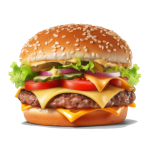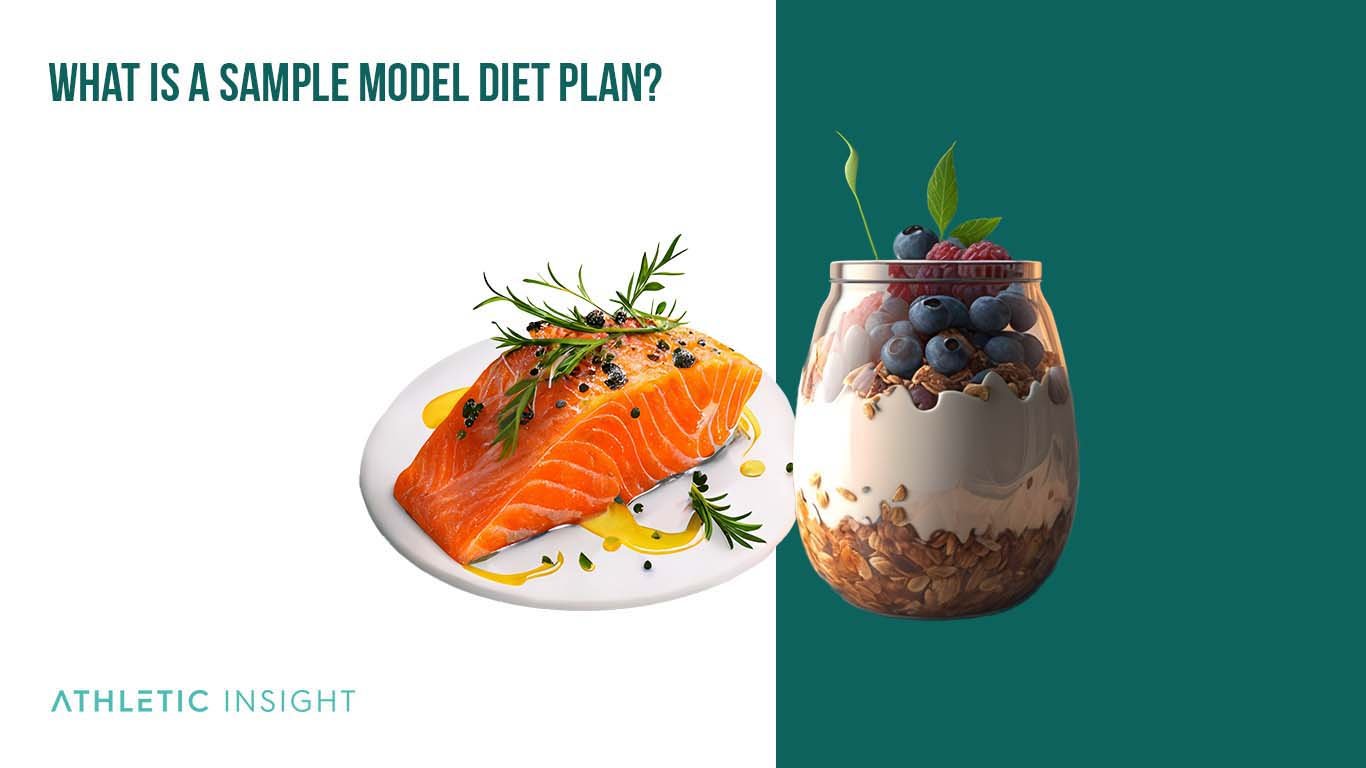Many people see supermodels as the definition of the perfect body. As a result, many people are looking for exercise routines and diets that can help them improve their fitness and body composition to have a supermodel body. The Model diet is one of the most common methods to get a supermodel aesthetic. This diet has become very popular due to its ability to help people lose weight and get a lean physique quickly.
The model diet is similar to other diets, such as ketogenic and paleo diets, but with some unique differences. The model diet focuses on eating lots of protein, healthy fats, and fiber while limiting carbohydrates and added sugars. These changes allow the body to use stored fat from the body as an energy source, leading to weight loss and improved body composition.
The model diet is known for its ability to help people achieve their desired body composition quickly. It has been proven effective in helping people lose weight, reduce body fat, and improve musculature. The model diet also helps people feel full for extended periods due to its high fiber content, which helps to reduce cravings and hunger, making it easier for people to stick to the diet.
This article will give you a comprehensive overview of the model diet, including what it is, the benefits and drawbacks of following this approach, and a meal plan to help you get started. By the end of the article, you will have all the information you need to decide if the Model diet is the right approach for your diet and fitness needs.
What is a Model Diet?
Unlike other diets, the Model diet does not refer to a specific set of guidelines or rules. Instead, the Model diet refers to the multiple diets, strategies, eating patterns, and exercise routines supermodels use to attain their trim and toned figure.

Most versions of the Model Diet revolve around restrictive eating, creating a caloric deficit, removing unhealthy foods like processed foods and unhealthy fats, and eliminating excess sugar from your diet. The model diet includes whole, unprocessed foods such as lean meats, vegetables, whole grains, and healthy fats. It is typically high in protein and moderate in carbohydrates.
One of the tenants of the model diet is a significant caloric deficit; some versions of this diet limit your daily calorie intake to only 1,300 calories. However, other versions focus on intermittent fasting, which involves restricting your calorie intake to certain parts of the day, such as a 12-hour window.
Finally, the model diet encourages exercise to maintain metabolism and promote weight loss. This diet plan is unsuitable for improving your gains in the gym or creating a muscular physique.
How does a Model Diet Work?
The model diet works by putting your body in a caloric deficit, replacing unhealthy foods with whole foods, and boosting your metabolism through exercise. The combination of these activities helps your body burn fat and lose weight.
- Caloric Deficit: A caloric deficit means taking in fewer calories than your body requires to maintain weight. As a result, your body uses stored fat as fuel, which causes your body to burn calories and lose weight.
- Replacing Unhealthy Foods: The model diet encourages eliminating processed and unhealthy foods. Removing these foods helps you reduce your calories and eliminate harmful ingredients like added sugar, preservatives, and unhealthy fats. Additionally, added sugar, preservatives, and unhealthy fats prevent weight loss and encourage bloating and water-weight retention.
- Exercise: The model diet focuses on regular training to keep up your metabolism and encourage weight loss. This exercise does not involve building muscle or increasing strength – instead, it helps you burn calories and fat. Most of the activity in the Model diet is cardio and light weight lifting.
- Boosting Metabolism: Boosting your metabolism through a healthy diet and exercise helps you burn calories, which enables you to lose weight faster and keeps your metabolism running high, encouraging continued fat loss.
The Model Diet impacts your whole body. It helps you reduce bloating, burn fat, lose weight, and encourage a healthy lifestyle. Your digestion may also improve when you remove processed food and sugar from your diet. Also, you may experience more mental clarity due to exercise and healthy eating.
The Model Diet is intense, and your body will initially react strongly. If you stick with the caloric deficit and exercise routines, you will likely experience lethargy and muscle soreness. You will also deal with cravings and hunger for the first week. However, these symptoms will recede as your body adjusts to the diet.
What are the health benefits of the Model Diet?
The model diet can be beneficial for shedding pounds, enhancing well-being, and boosting vitality. It focuses on eating whole foods that are nutrient-dense and low in calories.
Eating suitable food can help you shed unwanted pounds quickly and safely. The model diet recommends an intake of nutrient-rich fruits and vegetables and lean proteins such as fish, chicken, eggs, beans, nuts, seeds, and tofu.
These foods provide essential nutrients while helping to keep you feeling full for more extended periods, so you don’t overeat or snack too much between meals. Additionally, avoiding processed foods with added sugar helps reduce overall calorie intake, which can lead to faster weight loss results.
Eating foods high in vitamins A & C, like citrus fruits, dark leafy greens with beta carotene, salmon containing omega-3 fatty acids, antioxidant-rich berries, yogurt for calcium, and nuts & seeds offering magnesium can be beneficial to overall health. Adding these nutrient-dense foods to an otherwise balanced diet will improve physical well-being.
When we eat nutritious meals, our bodies can better utilize the fuel they receive, increasing energy levels throughout the day. This change allows you to stay mentally and physically more productive without relying on stimulants like caffeine or sugary snacks for a quick pick-me-up.
Increased alertness and improved concentration lead to higher-quality work output over extended periods, making it easier than ever for busy professionals looking for an edge.
The Model Diet has numerous advantages, such as shedding pounds and improving health and vigor. You can enjoy these advantages while eating delicious meals by following the proper foods on this diet plan.
What are the health risks of the Model Diet?
Despite the benefits, some severe health risks are associated with the model diet, including malnutrition, dehydration, and nutrient deficiencies. These risks are associated with the inadequate intake of essential nutrients.
- Malnutrition: This is a severe health condition when the body doesn’t receive enough nutrients to function correctly. Malnutrition can be caused by not eating enough food, eating the wrong kinds of food, or a combination of both. Symptoms of malnutrition include dizziness, fatigue, difficulty concentrating, and weight loss.
- Dehydration: The Model Diet can also lead to dehydration if you don’t drink enough water. Excessive loss of fluids causes dehydration, which can be dangerous. Symptoms include thirst, headaches, fatigue, and dizziness.
- Nutrient Deficiencies: Nutrient deficiencies result from not eating the right kinds and amounts of food. These deficiencies can cause serious health problems, including anemia, fatigue, and weakened bones.
The Model Diet can be beneficial if done correctly, but monitoring your health while following the diet is crucial, and you should consult a doctor before starting it.
How to do a Model Diet?
You can implement the Model Diet into your fitness routine by creating a meal plan, tracking your progress, tracking your water intake, exercising regularly, and monitoring your health.

- Create a meal plan: Plan your weekly meals and snacks. Make sure to include nutrient-dense foods from each food group.
- Track your progress: It’s essential to track your progress to ensure that you are getting the most out of the diet. Keep a food journal and document your meals and weight throughout the week.
- Track your water intake: Ensure you drink plenty of water throughout the day. Staying hydrated will help keep your body functioning optimally and aid in weight loss.
- Exercise regularly: Regular exercise is essential for any weight loss program, and the Model Diet is no exception. Include 30 minutes of moderate exercise at least five days a week.
- Monitor your health: Stay aware of any changes to your overall health.
Who should do Model Diet?
The Model Diet is a popular diet plan that can benefit anyone looking to lose weight and improve their overall health. It is also a good option if you are interested in achieving a supermodel physique. The Model Diet is what the top runway models use to stay in shape.
However, it’s important to note that this diet is not for everyone. People with certain medical conditions, such as diabetes or eating disorders, should consult a doctor before starting this diet.
How many calories should you consume when doing a Model Diet?
While on a Model Diet, you should consume between 1,300-1,500 calories per day. This number can vary based on individual needs and goals. Maintaining a sizeable calorie deficit is the best and safest way to achieve a successful weight loss journey. You may increase this number depending on how much exercise you incorporate into your routine.

Personalized Meal Plans
Uniquely Catered Recipes
Tracking Tools & Features
Best Educational Content
What is the proposed time frame for the Model Diet?
It would be best not to adopt the Model Diet as a long-term lifestyle change. The calorie intake is too low to sustain for long periods.
You should not follow this diet for more than 12 weeks. 12 weeks gives your body enough time to lose weight and adjust to healthy habits. Additionally, following the diet for too long can lead to nutrient deficiencies and other health issues.
However, you can repeat this diet as often as you like after taking a break of at least four weeks between cycles.
What are the Best Practices for Following a Model Diet?
You should follow several best practices while on the Model Diet, including meal planning, creating balanced meals, and portion control.
- Pre-Planning Meals and Shopping Lists: Planning is essential for success on the model diet. Construct a weekly menu incorporating breakfast, lunch, dinner, treats, and drinks. Create a grocery list based on your menu plan so you know exactly what ingredients to buy when shopping. A grocery list will help save time in the kitchen by avoiding multiple trips to the store or making do with ingredients you don’t have.
- Creating Balanced Meals: Eating balanced meals is crucial for weight loss success while following the model diet. Include lean proteins, like poultry or seafood; beneficial fats, such as olive oil and avocado; complex carbs, e.g., quinoa or sweet potatoes; fiber-rich fruits/veggies like broccoli and apples; plus low-fat dairy items, including yogurt or cottage cheese at each mealtime. These components stabilize blood sugar levels throughout the day, which helps maintain energy levels without cravings for unhealthy foods between meals.
- Portion Control: Consuming too much when dining out or preparing larger servings at home can be challenging, but practicing restraint to shed pounds with this diet is essential. Start by using smaller plates to look fuller than they are, then practice mindful eating techniques such as chewing slowly and savoring each bite until satisfied rather than stuffed full after every mealtime session. Measure out food items before cooking them if possible because eyeballing servings can lead to underestimating how much you eat during one sitting, which could sabotage progress towards reaching goals set forth while following this dietary regimen.
How simple is it to follow the Model Diet program?
It is not simple to follow the Model Diet program. The diet is highly restrictive, and you cannot eat many of the foods you usually eat. Plus, the exercise requirements are intense.
What is a Sample Model Diet Plan?
This menu exemplifies what you can eat in a week while on the Model Diet.

Day 1
- Breakfast: Half an avocado and a grapefruit
- Lunch: Green salad with chicken
- Dinner: Chicken fajitas bowl with brown rice
Day 2
- Breakfast: Green breakfast smoothie
- Lunch: Chipotle lime vegan taco bowl
- Dinner: Veggie burger with sweet potato fries
Day 3
- Breakfast: Egg white omelet with spinach and turkey
- Lunch: Grilled fish with quinoa and tomatoes
- Dinner: Salmon cakes with whole wheat bread
Day 4
- Breakfast: Banana nut oatmeal with skim milk
- Lunch: Vegetarian penne pasta
- Dinner: Caprese pasta with salad
Day 5
- Breakfast: Muesli with berries and bananas
- Lunch: Chicken lunch wrap
- Dinner: Turkey and vegetable meatloaf
Day 6
- Breakfast: Fruit breakfast shake
- Lunch: Turkey burger with salad
- Dinner: Grilled steak fajitas
Day 7
- Breakfast: Egg in a hole with peppers and onions
- Lunch: Grilled chicken quesadilla
- Dinner: Chicken noodle soup
What are the Best Recipes for a Model Diet?
These five low-calorie recipes are still delicious and will keep you satiated.
- Grilled chicken quesadilla: Using low-fat cheese is a great way to save calories on this quick and easy lunch.
- Chicken noodle soup: Chicken noodle soup is an excellent recipe for making a large batch and eating it all week.
- Turkey burger: Replacing beef with turkey helps save calories.
- Turkey and vegetable meatloaf: This meatloaf recipe is another excellent option to make ahead for meal prepping.
- Green breakfast shake: A quick breakfast shake is a great way to get your day going.

Personalized Meal Plans
Uniquely Catered Recipes
Tracking Tools & Features
Best Educational Content
What are the foods that you can eat while on the Model Diet?
A summarized list of the foods you can eat while on the Model diet is included below.
- Fruits: Apples, oranges, bananas, berries
- Vegetables: Tomatoes, squash, carrots, broccoli
- Grains: Brown rice, quinoa
- Legumes: Beans, chickpeas
- Nuts: Almonds, pistachios, walnuts
- Seeds: Chia, pumpkin, flax seeds
- Healthy fats: Avocados, coconut oil
- Proteins: Turkey, lean beef
What are the foods that you should avoid while on a Model Diet?
These are the foods you should avoid while on the Model Diet.
- Meat: Pork
- Poultry:
- Fish and shellfish:
- Meat-based ingredients: Deli meat and sausage
- Eggs:
- Dairy products: Full-fat dairy products
In addition to these foods, you should avoid eating processed food and remove added sugar from your diet. You should avoid these foods because they are high in calories and can take you out of your caloric deficit.
Can caffeine be included in the Model Diet?
Yes, you can consume caffeine while on the Model Diet. It can give you a boost of energy and reduce cravings.
What’s the Model Diet’s carbohydrate intake limit?
You should limit your carbohydrate intake to 20% of your daily calories while on the Model diet. Most of your calories should come from protein and healthy fats.
What are the Alternatives to Model Diet?
Many alternatives to the Model Diet include the Paleo, Ketogenic, and Mediterranean Diets. Each of these diets has its own set of rules and regulations that you should follow to experience the full benefits of the diet.
What are the facts about the Model Diet?
These are five critical facts about the model diet.
- It’s Restrictive: The model diet eliminates processed foods and added sugar.
- The Model Diet Limits Carbs: Your carbohydrate intake should comprise only 20% of your daily calories.
- Emphasizes Fruits and Vegetables: You should consume five to seven servings of fresh or frozen fruits and vegetables daily.
- Lean Protein: To help keep your body satiated and energized, you should eat at least three servings of lean protein each day.
- Healthy Fats: The Model Diet allows for healthy fats like olive oil, avocados, and grape seed oil.
Is a Model Diet effective for weight loss?
Yes, the Model Diet is highly effective for weight loss. Combining exercise and a large calorie deficit can help you lose weight quickly.
Is a Model diet combined with exercise possible?
Yes, combining the Model diet with exercise whenever possible would be best. When it comes to achieving optimal results on the model diet, exercise plays a significant role.
Incorporating moderate-intensity cardio activities into a daily routine is essential for successful weight loss. Examples of cardio exercises that may be beneficial for optimal results on the model diet include running, jogging, swimming, biking, rowing, and kickboxing.
What is the difference between a Model diet and exercise?
There are five key differences between the Model Diet and exercise. The model diet limits carbs to 20% of total calories. Conversely, exercise is necessary for weight loss as it helps burn calories and build muscle. The model diet focuses on lean proteins and healthy fats, while exercise emphasizes endurance and strength training.
The model diet relies heavily on fresh fruits and vegetables, while exercise relies more on cardio activities like running and biking. Finally, the model diet requires discipline with meal planning and portion control, while training focuses more on burning calories rather than restricting the amount you eat.

Personalized Meal Plans
Uniquely Catered Recipes
Tracking Tools & Features
Best Educational Content



